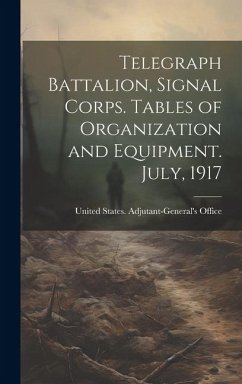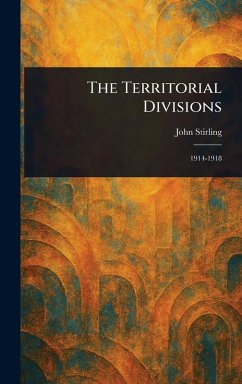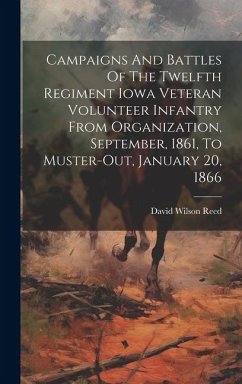
Tables of Organization, Infantry and Cavalry Divisions
Versandkostenfrei!
Versandfertig in über 4 Wochen
29,99 €
inkl. MwSt.

PAYBACK Punkte
15 °P sammeln!
This historical document provides a detailed look into the organization of infantry and cavalry divisions within the U.S. Army. Compiled by the U.S. Army Command and General Staff College, "Tables of Organization, Infantry and Cavalry Divisions" offers a comprehensive overview of the structure and composition of these military units. This work is an invaluable resource for military historians, researchers, and anyone interested in understanding the intricacies of early 20th-century military strategy and logistics. Originally published in 1921, this document provides insight into the army's org...
This historical document provides a detailed look into the organization of infantry and cavalry divisions within the U.S. Army. Compiled by the U.S. Army Command and General Staff College, "Tables of Organization, Infantry and Cavalry Divisions" offers a comprehensive overview of the structure and composition of these military units. This work is an invaluable resource for military historians, researchers, and anyone interested in understanding the intricacies of early 20th-century military strategy and logistics. Originally published in 1921, this document provides insight into the army's organization following World War I. It serves as a primary source for understanding the evolution of military doctrine and the adaptation of organizational structures to meet the demands of modern warfare. Its enduring value lies in its detailed record of a critical period in military history. This work has been selected by scholars as being culturally important, and is part of the knowledge base of civilization as we know it. This work was reproduced from the original artifact, and remains as true to the original work as possible. Therefore, you will see the original copyright references, library stamps (as most of these works have been housed in our most important libraries around the world), and other notations in the work. This work is in the public domain in the United States of America, and possibly other nations. Within the United States, you may freely copy and distribute this work, as no entity (individual or corporate) has a copyright on the body of the work. As a reproduction of a historical artifact, this work may contain missing or blurred pages, poor pictures, errant marks, etc. Scholars believe, and we concur, that this work is important enough to be preserved, reproduced, and made generally available to the public. We appreciate your support of the preservation process, and thank you for being an important part of keeping this knowledge alive and relevant.












